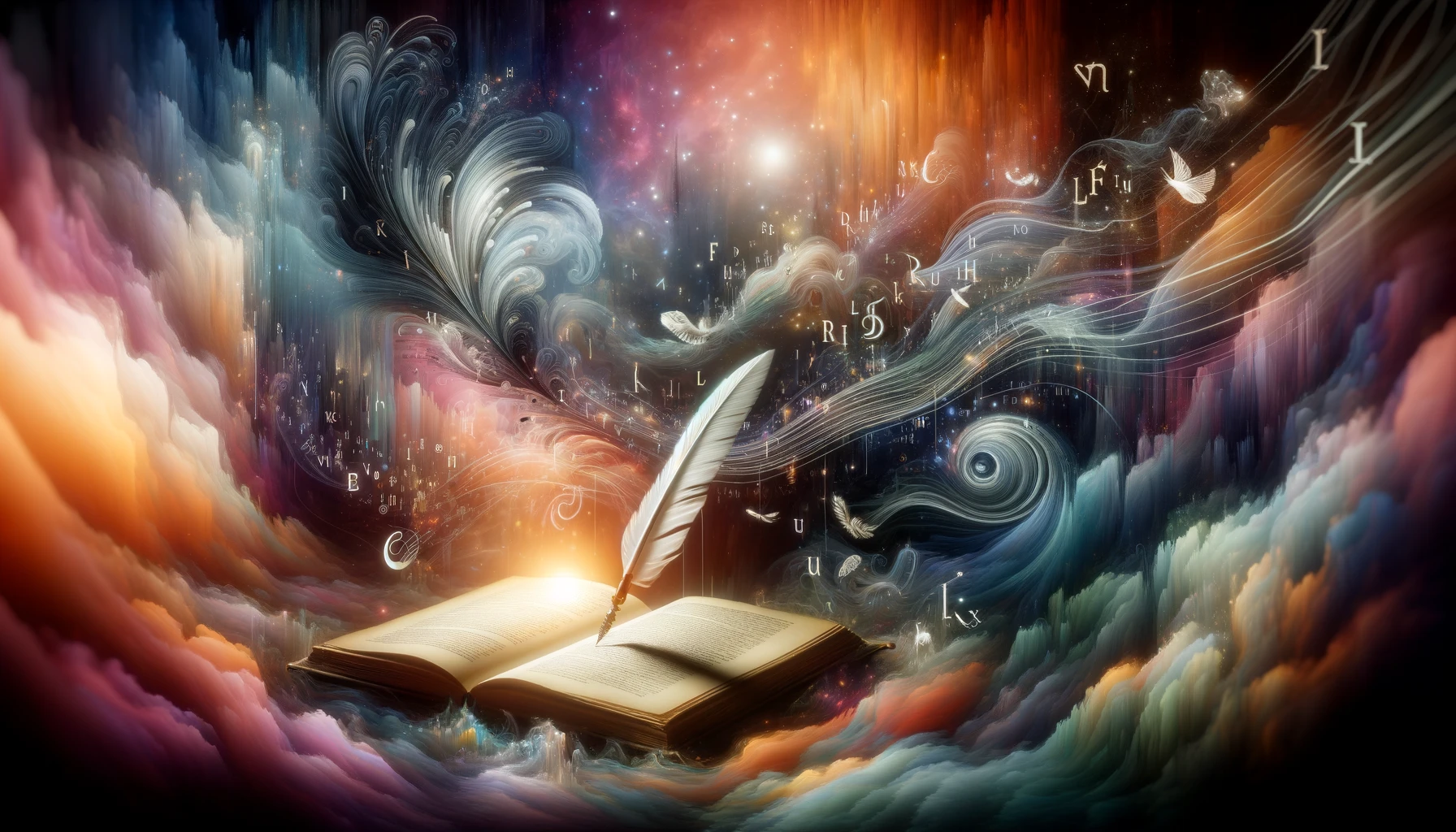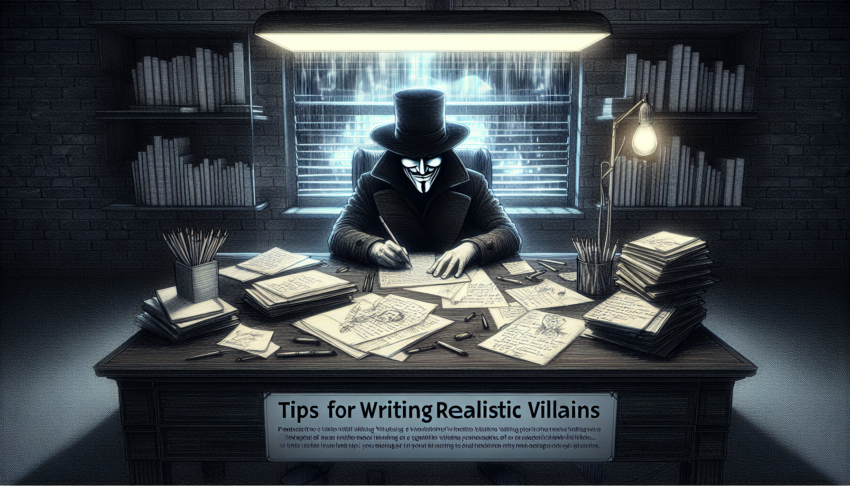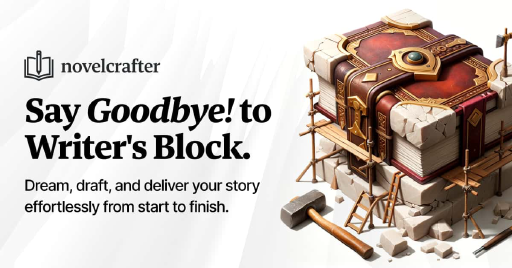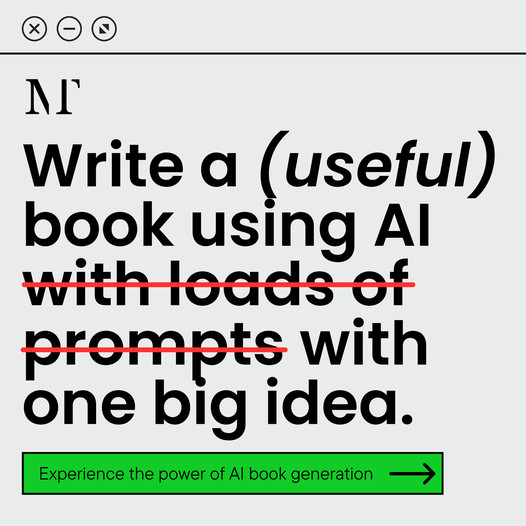Crafting Realistic Antagonists
Making a villain that sticks in the mind can make your readers hang on till the very last word. A well-thought-out bad guy or gal can ramp up the drama, adding deeper layers to your tale.
Why Well-Developed Villains Matter
When a character has multiple sides, they can truly strike a chord with folks. A villain that’s pulled together thoughtfully doesn’t just mess with the hero’s day; they make the whole story richer. Here’s why you should really care about your antagonists:
| What Makes Them Important | What It Does for Your Story |
|---|---|
| Boosts Tension | A strong villain keeps the heat on, making things more gripping. |
| Hits the Feel Button | Whether it’s fear, sympathy, or just plain curiosity, a good villain gets those emotions running. |
| Sparks Growth | Antagonists often throw challenges at the hero, pushing them to grow and giving readers something to root for. |
| Adds Moral Shades of Gray | A villain that’s not all black and white can make the story more intriguing, adding weight to the narrative. |
Characteristics of Memorable Antagonists
There’s more to crafting a villain than just giving them an evil laugh. A memorable bad guy often has a mix of traits that keep them interesting beyond the stereotypical. Here’s what might work in your story:
| What to Think About | Why It Matters |
|---|---|
| Solid Reasons | A villain with clear motives helps readers get their point of view—even if they don’t agree with it. |
| Human Touch | Everyone’s got flaws, right? Giving your villain some makes them feel more real. |
| Strong Personality | A mix of charm and danger can make the antagonist irresistibly creepy. |
| Keeps You Guessing | Throwing in the odd surprise keeps readers engaged, wondering what’ll happen next. |
| Background Story | A detailed past can explain why the villain’s gone rogue—adding a layer of understanding for the reader. |
For more on building characters that leap off the page, check out how to create realistic characters. These tips on writing realistic villains will not just boost your skills but leave a mark on anyone who reads your work.
Understanding Villains
Crafting realistic villains is crucial to grabbing your audience’s attention. Knowing what sets these baddies apart and what drives them can really flesh out their roles in your story.
Villains vs. Antagonists
Though folks often mix these up, “villain” and “antagonist” aren’t the same. Villains are downright evil, with bad guy plans, while antagonists can be any character or thing getting in the protagonist’s way.
| Character Type | Definition | Examples |
|---|---|---|
| Villain | An evil character with nasty intentions | The Joker, Voldemort |
| Antagonist | Any force opposing the main character | A rival, a tough environment |
Motivations Behind Villainy
Figuring out why your villain does what they do brings life to their character. Here’re a few common reasons they go rogue:
- Power Hungry: Lots of villains crave control over people or situations.
- Revenge: A sad or double-crossing past might drive their dastardly deeds.
- Beliefs: Some villains think they’re fighting for something good or following a personal cause.
- Fear: They might lash out from panic, hoping to shield themselves from threats.
If you want to dive deeper into crafting villains that stand out, check out our piece on how to create realistic characters.
Humanizing Your Villain
Even the worst villains have a human side. Finding it makes them relatable. Here are some ways to show their depth:
- Backstory: Giving them a detailed past helps readers see their point of view.
- Flaws: Nobody’s perfect. Let those imperfections show to make them multi-dimensional.
- Acts of Kindness: Occasionally showing a villain’s softer side can create some serious character tension.
A full-fledged antagonist ramps up the story and the face-off between hero and villain. For more writing tips, dive into our piece on how to write better stories.
 What Poetry Feels Like
What Poetry Feels LikeCreating Depth in Villains
Villains. Love ‘em or hate ‘em, a story ain’t complete without ‘em. Your mission: To build villains so real, your readers might just invite them over for dinner. No more 2D baddies here. We’re diving into complex backstories, highlighting flaws, and exploring those murky moral waters.
Complex Backstories
Ever wonder why some villains make such an impact? Blame it on their past. A backstory isn’t just any old tale—it’s the blueprint to their wicked ways.
| Aspect of Backstory | Description |
|---|---|
| Childhood Trauma | Yup, those childhood moments that stick like glue. |
| Pivotal Life Events | Moments that flipped their world upside down. |
| Relationships | Bonds that bent and shaped their path. |
The goal: Let readers peek into their past. They might not love the villain, but they’ll sure understand why they do what they do.
Flaws and Vulnerabilities
Every villain needs quirks—things that make ‘em real. After all, perfection is, well, boring.
| Flaw Type | Description |
|---|---|
| Overconfidence | That cocky trait that trips ‘em up. |
| Emotional Instability | Those pesky feelings always getting in the way. |
| Obsession | Like a dog with a bone, it’s all they see. |
These little cracks? They’re golden chances for your villain to grow—and maybe even learn a thing or two.
Moral Ambiguity
Life isn’t black and white, and neither are the best villains. Give ‘em a pinch of moral muddiness, and watch your readers squirm.
| Aspect of Ambiguity | Description |
|---|---|
| Justifiable Actions | What looks dirty but has a shiny intention underneath. |
| Grey Morality | Decisions that keep you guessing—bad or just really confused? |
| Relatable Motives | Goals that hit home, like revenge or, y’know, love. |
Let these themes pop in and out, kinda like the universe’s way of keeping ‘em all humble. You gotta make the reader question everything they thought they knew. For more on character building, maybe check how to create realistic characters or dig tips for writing a novel.
Use these villainy nuggets to spice up your storytelling skills. Hungry for more? We’ve got beginner writing tips or deepen that emotional pool with how to create emotional characters. Let’s make your villains folks your readers won’t easily forget.
Villain-Archetype Exploration
Making villains that stick in your readers’ minds? That’s the name of the game. Let’s chat about different villain types, how to flip conventional tropes on their heads, and the juicy relationships that make them unforgettable.
Types of Villains
Villains aren’t just there to twirl their mustaches; they play vital roles and test our heroes in fresh, exciting ways. Knowing these villain types can set you up for creating more intriguing foes.
| Villain Type | Description |
|---|---|
| The Mastermind | Brainy and scheming, always ten steps ahead. |
| The Brute | Tough and intimidating; pushes others around. |
| The Corrupt | Loves power, drowning in greed and decay. |
| The Tragic Villain | Haunted by the past, makes you almost root for them. |
| The Puppet Master | Pulls strings from the shadows; gets others to do their dirty work. |
These are a starting point, but don’t feel boxed in—you can pick and blend traits to craft a villain like no other.
Subverting Stereotypes
Nobody wants a cookie-cutter bad guy who’s evil just because—yawn. To avoid creating cardboard cutouts, try these ideas:
- Add Some Layers: Give your baddie a backstory that makes their behavior make sense.
- Real Reasons: Evil just ’cause? Nah. Your baddie should have motives folks can sorta get behind.
- Show Their Soft Spot: Give them weaknesses—human flubs and fears make them more real and less like villainous robots.
Breaking away from tropes sets your characters apart, making them fascinating and maybe even relatable. Wanna go even deeper? Peek at our how to create realistic characters guide.
Dynamic Villain Relationships
The zap between villain and protagonist can spice up your story like nothing else. Here are some pointers to raise the stakes:
- Their Paths Collide: Make their goals clash, setting the stage for electrifying tension.
- Respect’s a Two-Way Street: Add flair by showing villains who grudgingly admire the hero—it’s a game changer.
- Evil Buddies: Give your villain some friends or minions, showing off different facets and fleshing out their dreams.
These feisty relationships crank up the story’s tension meter to eleven. Need more inspiration? Check out our creative writing exercises.
Build villains using these ideas, and you’ll serve up captivating antagonists that grip your readers and make your tales all the richer. Remember, every villain needs that complexity and realism. Go spin some devilish tales!
Writing Convincing Villain Dialogue
Crafting believable lines for your baddies can really spice up your story and keep folks flipping the pages. Find that distinct villain voice, sprinkle in some cool character traits, and keep a nice mix of scary and layered to make your dialogues sing.
Establishing Villain Voice
Like every character, your villains need a unique voice. This helps showcase who they are and why they’re doing what they’re doing. Keep an eye on these characteristics:
| Characteristic | Description |
|---|---|
| Tone | The vibe of their speech (sarcastic, calm, hot-headed) |
| Vocabulary | Word choices showing their smarts or status |
| Speech Patterns | Catchy phrases or mannerisms that make them stand out |
Think about what makes your villain tick. A brainy villain might fancy big words, while a chaotic one might drop a line like a bomb. Try out different scenes to nail down a tone that vibes with your readers.
Revealing Villainous Traits Through Dialogue
Dialogues can be your secret weapon for showing off your villain’s true colors. Let their chats spill the beans on what drives them and where their faults lie. Here’s how to unwrap their personality:
- Subtext: Slip in deeper meanings between lines. Maybe your villain drops a casual “oops” in a plan, showing their sly side.
- Conflict: Watch how they handle pushback. Their reactions—defensive, cocky, or cool-headed—shed light on their character.
- Diction: Their word choices paint pictures of cunning, ruthlessness, or frantic desperation.
When done right, these elements spill the beans on motives and subtle hints without a wordy info dump.
Balancing Menace with Nuance
Villains aren’t all bad—adding depth to their dialogue reels readers in. Lines that sting, yet reveal vulnerability or weird logic, make them complex. Here’s how to keep things spicy:
| Technique | Description |
|---|---|
| Moral Complexity | Let them justify their actions or view the world differently. |
| Humor | A pinch of dark humor makes them relatable or eerily chilling. |
| Emotional Moments | Let their words show hidden pain or regret, stirring empathy or confusion. |
Make those dialogues pulse with fear and mystery while coaxing readers to ponder the villain’s motives. This balance not only makes your character more interesting but also amps up their impact on your story.
For extra tips on character creating, peek at how to create realistic characters or tips for writing authentic dialogue.
Evoking Emotions with Villains
Connecting your audience to your villain’s dark side can add a punch to your tale. Let’s talk about making those villains stir up some serious feelings.
Building Tension Through Antagonist Actions
What your bad guy does should keep folks on the edge of their seats. Think about your villain diving headfirst into some shady deeds that have your hero biting their nails. This unpredictability cranks up fear and sparks strong feelings from your audience.
| Action Type | Emotional Response |
|---|---|
| Going after a loved one | Fear mixed with protectiveness |
| Wrecking havoc or chaos | Anxiety and tension |
| Giving grim choices | Dread and moral struggle |
As your story rolls on, ramp up what your villain does to raise the stakes. Readers want to feel that tug of war. Let your villain’s choices ripple through the plot, making everyone feel the pressure.
Utilizing Foils and Mirroring Techniques
A foil character shines a light on what your hero’s all about by doing the opposite, while mirroring highlights similarities. This not only deepens your audience’s understanding but shifts how they see the villain.
So if your hero’s got a heart of gold, having a villain who’s heartless can crank up those emotional stakes. Or, a villain with a past like the hero’s can pull the audience into a mess of mixed emotions.
| Technique | Emotional Impact |
|---|---|
| Foil character | Sympathy towards the hero |
| Shared background | Complexity and moral confusion |
Crafting Memorable Climactic Confrontations
When the hero and villain finally throw down, make sure it’s packed with emotion. Reflect on their journey to this point. The scene needs tension, raw nerves, and emotion.
Bring in some killer dialogue to spill secrets and raise stakes. Show how the villain’s nasty deeds hit home with the hero, brewing a pot of anger, regret, or remorse.
Plan this face-off to knock out predictability. Surprise twists can startle your audience and pull them in deeper. If you need more pointers, check out our article on crafting tense showdowns.
With these tricks up your sleeve, your villains can hit the emotional bullseye, making your story richer and more gripping. Lean on these villain tips to give your tale that extra emotional kick, keeping readers hooked for the long haul.


 Grab my poetry book, 'we're all just wanderers in the end' Here
Grab my poetry book, 'we're all just wanderers in the end' Here AD: Your Book Finally Written...
AD: Your Book Finally Written...